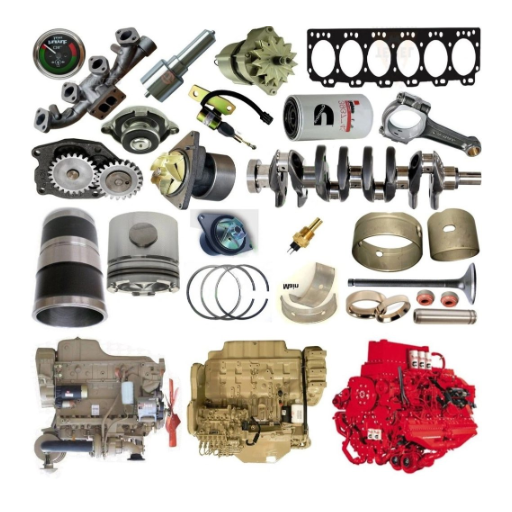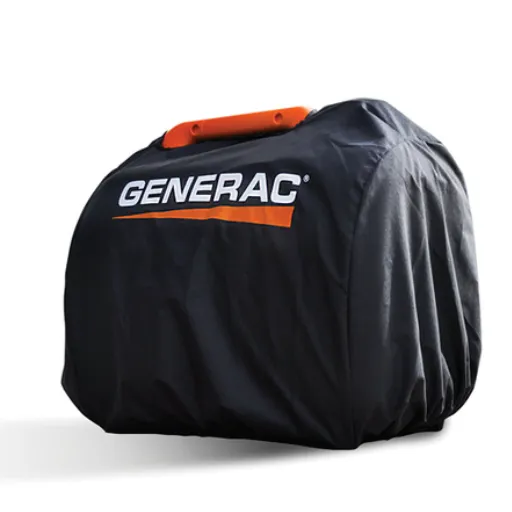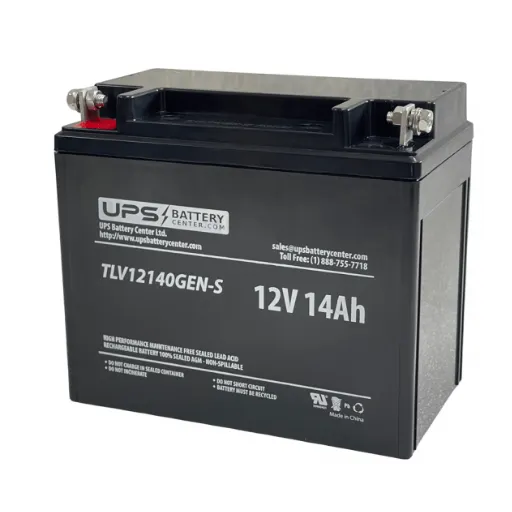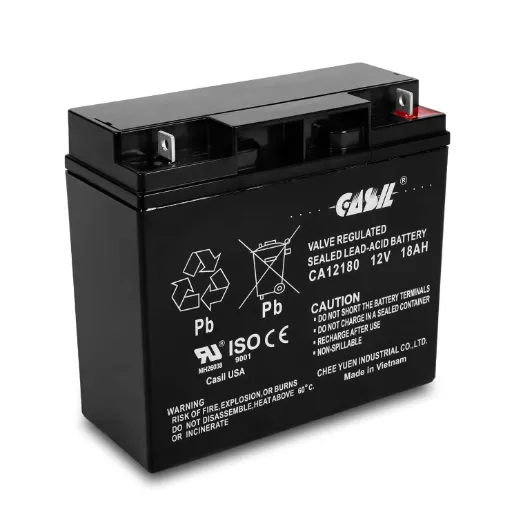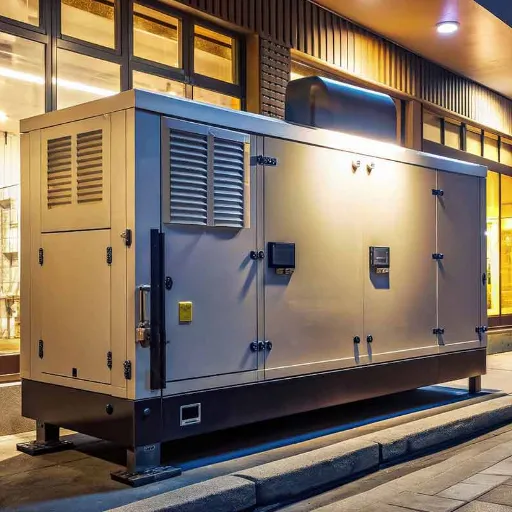Generators play a crucial role in providing reliable power solutions for a variety of settings, ranging from residential backup systems to industrial applications. Whether you’re preparing for unexpected outages or optimizing equipment for continuous operation, understanding the essential components and accessories of a generator is pivotal. This guide is designed to serve as a comprehensive resource for anyone seeking to enhance their knowledge of generator parts and ensure peak performance and longevity. By exploring key components, accessory categories, and their functions, this article will equip you with the insights needed to select, maintain, and upgrade your generator effectively.
What are the Essential Generator Parts?
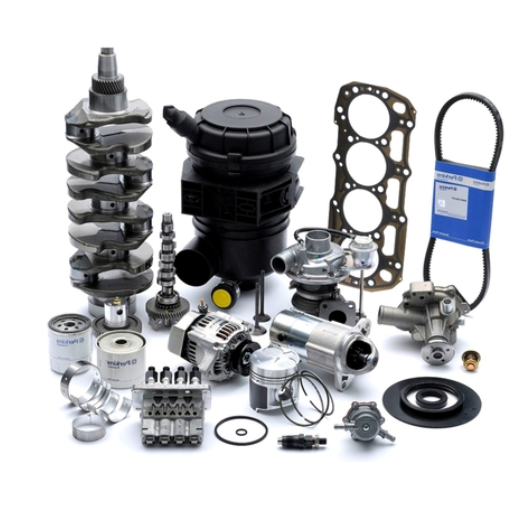
Understanding Generator Components
Generators consist of a network of components that are intricately linked to one another, with each having a designated role in assuring dependable energy generation. The heart, an engine, is configured to transform a fuel’s mechanical energy to rotational motion. This movement is then able to activate the alternator, or the generator head, which uses electromagnetic induction to produce electricity.
Other components include the voltage regulator that keeps output voltage to predetermined levels, avoiding surges and dips that would potentially damage equipment connected to the generator. The fuel system, which comprises the fuel tank, fuel pump, and fuel lines, maintains a constant level of energy needed by the engine for optimal performance. The anti-lock braking system also prevents overheating with aid from fans and radiators, lubricants create a thread for internal moving components yielding to wear and tear.
Included but not limited to, the control panel, allow for management of the generator’s operations. They perform tasks such as monitoring fuel levels and calculating values of voltage, current, and frequency as well. The battery charger and starting system prepares the generator for instantaneous action enabling rapid ignition sceneries. Together all of this allows uniformed voltage to be supplied from the generator for optimal use.
Comprehending these parts and their functions is important for maintaining operation effectiveness and for troubleshooting any emerging problems. For instance, the design of the alternator, like brush vs. brushless, affects how durable and maintenance-intensive it is. It is important to have such technical knowledge to make better choices when managing generator assets.
Key Replacement Parts You Need
Adhering to proper maintenance procedures and making routine inspections to replace essential parts is crucial in sustaining a generator’s performance. Managing the generator requires familiarity with the most important parts. The list below highlights the most critical components that need to be monitored:
- Air Filters: The purpose of an air filter is to make sure no debris, dust, or other contaminants enter the engine. Any restriction in the airflow as a result of a blocked air filter will reduce its efficiency, which may lead to overheating. Air filters must be checked and replaced consistently, especially in dusty places.
- Fuel Filters: These filters are responsible for ensuring that no impurities reach the engine along with the fuel. Any filter tends to get clogged after some time. This will restrict the fuel flow which in turn will degrade the performance of the engine. To avoid combustion problems and engine failure, fuel filters should be replaced as per the fuel filter guidelines.
- Oil Filters: Oil filters are used as a measure of protection to an engine as they removes the impurities in the lubricating oil. Moving parts will lead to excessive wear and tear. Internal damage can be avoided and the life of the engine extended by replacing oil filters during scheduled maintenance.
- Starter Batteries: During the firing process, the generator powers up with the help of a starter battery. Over time, batteries undergo wear, and their ability to hold a charge diminishes. The battery is periodically tested and replaced so that reliable battery startup is ensured, especially in emergency backup power scenarios.
- Spark Plugs (For Gas Generators): A spark plug penetrates the combustion chamber to ignite the fuel-air mixture in the engine. Evidence that a vehicle’s engine is not operating poorly could be starting issues, poor fuel economy, and stalling. For vehicles to operate appropriately, regular maintenance of the spark plug is essential.
- Hoses and Belts: Hoses and belts serve vital functions in systems like drive assemblies and cooling systems. As these parts undergo use, they are also subjected to heat exposure and various environmental conditions which accelerates degradation. Replacing every component that is leaking, cracked or frayed lessens the equipment failure odds.
- Control Boards and Voltage Regulators: These components are crucial in controlling the operational settings and maintaining constant electrical output so that a generator does not suffer from under or overworking. If these parts fail, steady power is rendered impossible. Monitoring defective parts and their condition ensures seamless performance.
Effective maintenance along with timely replacement of parts allows for optimum operational performance and dependability of your generator system while reducing unscheduled downtime resulting from system failures. Ensure the manufacturer’s guidelines regarding schedules, part interchangeability, and replacement are followed for the best possible outcomes.
Choosing the Right Generator Parts and Accessories
Choosing the correct generator parts and accessories is paramount for maintaining generator system operational efficiency and service life extension. Consider factors such as compatibility, quality, and functionality. The chosen components must be within the specification limits set by the manufacturer. Considerations must be made for performance, safety issues, reliability, and the presence of low-quality or inferior parts.
Critical components like fuel and air filters and spark plugs require interference fit with the system so that they do not fall out during operation. For this reason, they must be made from the finest materials with the highest strength-to-weight ratio. Heavy-duty advanced filtration air filters, for example, serve to improve engine performance by preventing contamination of the system, which leads to reduced wear and tear. Further, fuel filters with high filtration efficiency enhance the fuel system by preventing clogging and retaining impurities from fuel reserves.
Accessories improve system performance. Transfer switches and extension cords rated for specific power loads alongside noise reduction kits not only enhance safety but also the overall user experience during generator running. Surge protectors and voltage regulators additionally enhance the reliability of the system by protecting connected devices from power fluctuations. Always consider the operational needs of your generator, such as the load capacity and environmental conditions, before buying parts or accessories.
How to Conduct Maintenance on Your Generator?
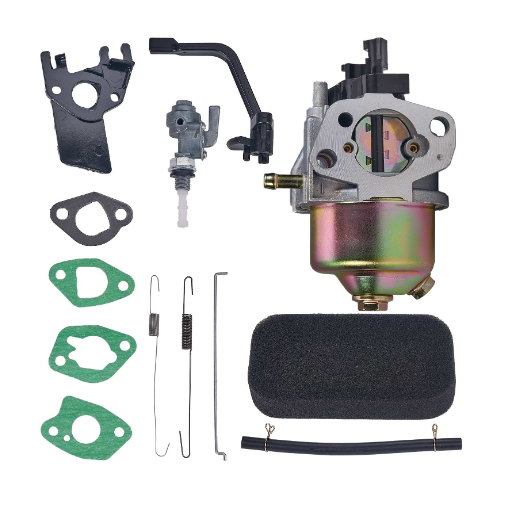
Best Practices for Regular Maintenance
To keep your generator running well and lasting a long time, you must follow step-by-step practices along with performing maintenance tasks. In the first place, always check the air filter as it can cause blockage and stagnation of airflow; lost efficiency can also stem from clogged filters. Removing or cleaning this part should be done every 100-200 hours of operation, and it’s largely dependent on the patterns of usage and the environmental conditions.
Looking after the spark plugs has to be done regularly as well. Checking if they are put under corrosion or show strong signs of wear needs to be done, and if so, replacing them should happen after every 200-300 hours of operation. Also, make sure that the oil levels are being monitored frequently, and oil changes—if at 50 operational hours or 100—should be done as recommended by the manufacturer’s manual. Using top-grade oil will make sure the internal parts do not wear and tear too much.
The fuel system should also not go unnoticed. Especially dry fuel, if it’s more than 6-12 months Stale, Better replaced to maintain efficient combustion while eliminating blockages. It’s worth noting that for diesel generators that injection systems need to be cleaned regularly using proper cleaning cycles along with filters to ensure effective operation.
Finally, perform load bank testing to confirm that the generator can run at full loads without the risk of overheating. This practice helps identify operational inefficiencies that might go unnoticed with lighter loads and should be executed at least once a year. By following these comprehensive maintenance practices, you’ll greatly prolong your generator’s operational life cycle and reliability during critical uses.
Using Maintenance Kits for Efficiency
Unlike other tools, maintenance kits provide generator users an easy way of servicing their equipment. Stripped with air filters, oil filters, spark plugs and replacement belts, these kits are designed with specific requirements that mark your generator’s model. Each piece increments your kit’s efficiency, thus saving you money, time, and operational costs during servicing.
Fuel efficient engines require frequent maintenance on their spark plugs and filters. Maintenance kits equip users in advance with the right tools and filters to avoid problems such as clogged air filters that slow down engines and wear out spark plugs which decrease combustion.
Operators dealing with high performance generators will find modern maintenance kits useful. Advanced oil filters that make use of sophisticated filtration media to trap tiny particles without letting them circulate through the engine make sure your oil is clean and lubricity remains at peak levels.
Integrating your upkeep routine with maintenance kits will increase your kit’s efficiency and compliance with the manufacturer’s expectations.
Signs Your Generator Needs Service
Your generator’s efficiency and reliability depend heavily on maintenance. Keeping track of some warning signs of potential problems might allow you to take steps before the situation goes out of control. Here are some signs that prove your generator might require some sort of service:
- Unusual Noises: Continuous or strange sounds like knocking and grinding noises requires your immediate attention. Such sounds signal internal components like bearings and gears are either getting misaligned or are outright worn out and if used in this condition for prolonged periods might require significant repairs.
- Decreased Power Output: If your generator cannot handle loads or has a drastic drop in performance compared to before, it could be due to worn-out engines, seized alternators, or blocked air or fuel filters.
- Delayed Start or Failure to Start: If starting the generator is taking more time than usual or, at times, fails to start completely, possibilities include having problems with the battery, spark plugs, or fuel lines getting blocked.
- Visible Leaks: Seeing oil, fuel, or coolant leaking from a source is a bad sign. Apart from being a threat to safety, this makes the generator and other equipment perform badly in general in case they are not looked after soon.
- Excessive Fuel Consumption: An unexpected increase in fuel usage signifies the engine and filters are clogged and need to be looked after immediately.
- Frequent Overheating: When the operating temperature is high or when there are repeated cycles of hot shutdowns, it often indicates problems with the cooling systems, such as low coolant levels, blocked vents, or faulty cooling fans.
- Exhaust Smoke: Associated common symtoms can also mention the type and amount of smoke emitted from the exhaust. In this regard, black smoke indication suggests that there is incomplete combustion which is the results of too much fuel and not enough air. White and blue smoke on the other hand emanates from oil contamination or insufficient compression.
Responding to those issues in a timely manner helps in the protection of the equipment and minimizes chances of unpredicted shutdowns. Further safety while operating the generator is achieved through regular inspections and maintenance.
How to Enhance Generator Performance?
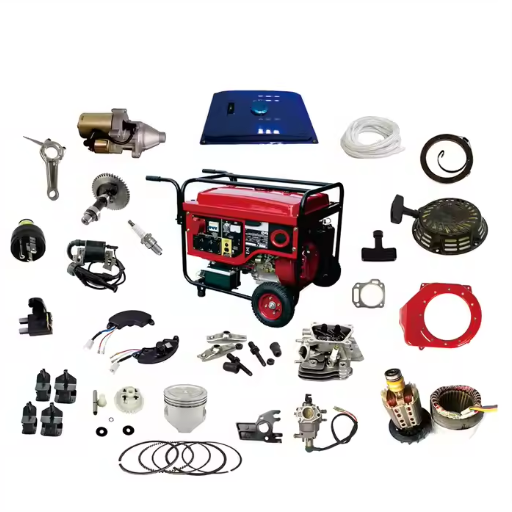
Optimizing Energy Efficiency
Improving energy efficiency in generators involves implementing highly sophisticated technologies, load management, and a regimen of consistent servicing. One targeted area to enhance is ensuring that the generator rests in the optimal load range, generally hovering between 50% and 80% of its maximum rated capacity. Sub-optimal fuel stacks can lead to ‘wet stacking,’ an operational inefficiency where a quasi-explosive residue called fuel is not liable to combustion at the exhaust region. On the flipside, excessive loads have their drawbacks, heating and accruing mechanical damage over time.
Effective fuel management is key to optimizing performance levels. The provision of high-grade fuel ensures that contaminants are kept to a minimum, aiding in the efficient functioning of combustion processes. “Set-it-and-forget-it” power management with automatic load transferring systems preserves energy by regulating the power distribution during low demand periods.
New technologies like digital controls and real-time info systems provide accurate supervision on numerous performance aspects, including voltage, frequency, and fuel. These capabilities grant operators the ability to fine-tune the various components of the generator, eliminating the inefficiencies before they spiral out of control. The incorporation of energy-efficient alternators or the usage of variable speed drive systems further supplements the trimming of fuel consumption while keeping the performance intact and emissions on the lean side.
Lastly, basic maintenance like filter changes, air intake system inspection, and proper lubrication ensures that the generator functions at its maximum efficiency. A proactive commitment to energy conservation practices minimizes operational costs while extending the useful life of the generator, thus enhancing sustainability and dependability.
Upgrading with Latest Accessories
Accessorial advancements to generators have modernized their capabilities, efficiency, and systems remain more reliable. An example would be smart monitoring systems that now have real-time diagnosis as well as remote management. Smart control panels work in tandem with these systems which allows operators to follow constraints such as fuel level, engine functioning, and maintenance with utmost precision.
Incorporation of automatic transfer switches even further simplifies generator use as they ensure instant return of power during unforeseen outages, which reduces downtime and protects crucial systems. Moreover, high-efficiency silencers and exhausts have also become available, further reducing noise pollution or emissions. These components comply with tough environmental regulations. Furthermore, power module kits enable the addition of other generators in parallel to boost power output, which allows these generators to provide flexible and reliable energy solutions while maintaining stability.
These advanced accessories allow businesses and organizations to reduce their environmental footprint while simultaneously improving energy reliability, operational capabilities and preparing for future technological advances.
What are the Benefits of Automatic Generator Systems?
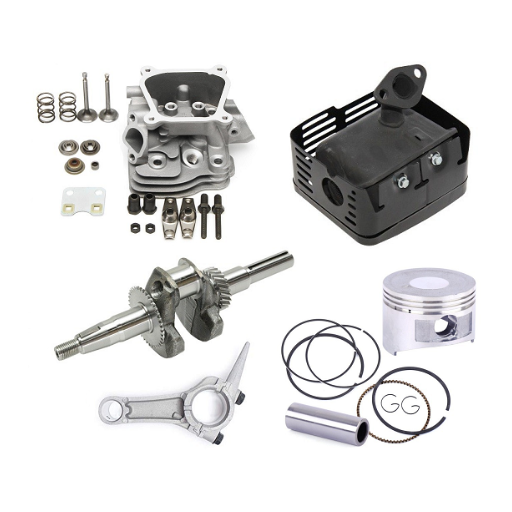
Features of Automatic Generators
Features of modern automatic generators are designed to provide an effortless transition of power and consistent functions even when the utility goes offline. Some of these features include:
- Integration of an Automatic Transfer Switch: Automatic generators come with ATS which automatically detects power outage and initiates generation start in a few seconds. No user action is needed on the generator’s side which helps sustain continuous energy supply for important operations.
- Sophisticated Monitoring Systems: Modern automatic generators have sophisticated self-containment monitoring systems, which supply information regarding performance metrics, diagnostics, and fuel consumption in real-time. Such systems greatly improve operational performance by resolving issues prior to the damage being done.
- Emphasis on Fuel Flexibility: Automatic generators accept a wide range of fuels like propane, natural gas, and diesel. This flexibility makes it easier to switch at a moment’s notice based on pricing, availability, or even environmental factors.
- Robust Weatherproof Enclosures: Many automatic generators come equipped with weatherproof enclosures to guarantee protection from harsh environmental conditions and ensure constant, reliable functioning. This design sustains rain, snow, extreme temperatures, and much more.
- Streamlined Load Management Features: Automatic generators with smart load management can distribute and prioritize power by necessity. This prevents overloading and guarantees efficiency during prolonged outages.
- Regulatory Compliance: Safety, dependability, and multifaceted functionality of automatic generators is observed through strict industry standards UL 2200 and ISO 8528’ compliance.
- Residential Use: Many automatic generators are appropriate for residential and other quiet areas because of noise reducing features like soundproof enclosures and advanced mufflers.
- Visibility and Monitoring: Remote monitoring and controlling features are available to users on most modern systems, smartphones, or online interfaces.
From industrial plants to residential properties, generators are the most vulnerable and efficient units with advanced capabilities tailored to the user’s energy requirements.
Comparing Automatic and Manual Systems
Power generation for Commercial and Residential applications can be executed using Manual or Automatic Generator Systems. The cost of Services, Maintenance, Manual Control, Productivity, Operational Efforts, and Value Efficiency must all be taken into consideration for both systems. Factors of importance such as auto start capabilities, remote monitoring, diagnostics, and reduction in user intervention are things to consider when using Automatic Systems. Remote monitoring and diagnostics are only a few of the features that reduce the user’s workload. Automatic systems are valued the most in case of redundancy and uninterrupted power supply, these include hospitals and data centers. Costly components and automation technology in the Generators make automatic systems costly.
Manual Generators are simple, low priced, and require less of an investment upfront. They are most efficient where Operations cut investment budget, which makes them ill-suited for emergency services. They have great extended downtime value for those relying solely on manual control. The low-price units do require a maintenance system that ensures their operational ability. Extended periods of non-use lead to the need for increased inspections with the hope that this avoids costly delays while ensuring proper performance. Even with increased cost reserved, operating these generators requires trained personnel and indirect funds for improved outage performance. Without trained users, the sudden depreciation level can be drastic.
According to research, automatic systems are favored in situations where they can be relied upon to function accurately and quickly, whereas manual systems are more preferable in budget-limited applications or those with low usage. Some of the factors that should drive the decision include how critical the application is, the overall cost of the system over its operational lifetime, and the user’s capability to control the system actively.
What Accessories Enhance Your Generator’s Performance?
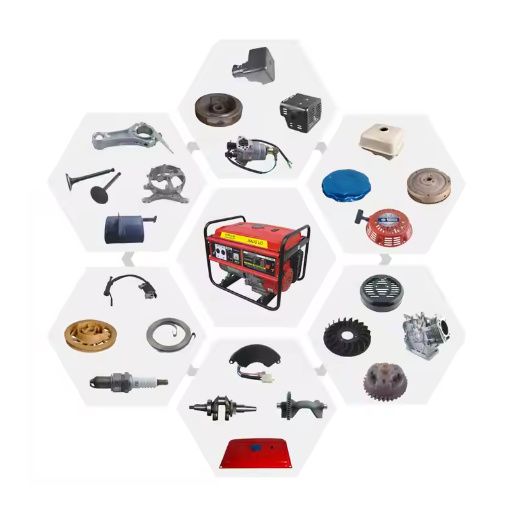
Exploring Battery and Charger Options
Choosing the right battery and charger is essential for the generator’s performance and dependability. The batteries used in generators include lead-acid and lithium-ion batteries, each having specific qualities. Lead-acid batteries are well-known for being cost-effective and for their stable performance during intensive use, though they usually need periodic servicing and have a relatively short lifespan. In contrast, lithium-ion batteries are more suitable for applications where maintenance, efficiency, and low upkeep are needed due to their high energy density and extended lifespan.
To protect battery health, there are three main types of chargers: trickle, smart, and multi-stage chargers. Trickle chargers provide a steady, low-level charge, ensuring the battery remains sufficiently charged for long durations. Smart chargers feature advanced algorithms that change modes to suit the battery’s requirements, preventing overcharging. Considered the most effective, simply due to the range of support they offer, multi-stage chargers provide bulk, absorption, and float stages, thus ensuring the appropriate charging sequences are met for the type and condition of the battery.
When choosing batteries and chargers, their compatibility with the model of the generator, temperature, and expected use must be considered. Correct integration of these components enables the generator to live longer as well as perform reliably during important tasks. Other charger features, like resilience to extreme conditions or temperature compensation, could also increase efficiency and stability during operations.
The Benefits of Oil and Fuel Additives
In many different kinds of machinery and engines, the use of oil and fuel additives increase their performance, usability, and even lifespan. The purpose of these chemical compounds is to solve myriad problems and enhance system performance. For example, oil additives or oils themselves lubricate, enable smooth motion interactions, and stave off blockages from sludges or deposits within the engine. This ensures smoother functioning and minimizes expensive mechanical failures.
On the opposite side, fuel additives help clean contaminants off fuel and prevent them from harming combustion, as well as increasing fuel stability. They can improve the rated cetane or octane so that pumps and engines operate efficiently even under varying loads and conditions. Furthermore, advanced additives prevent the formation of carbon deposits in important parts like injectors and combustion chambers, which economizes fuel and emissions. Recent data suggests that engines with proper additives can boost operational efficiency by 10% to 15% while reducing harmful emissions, further aiding compliance with environmental regulations.
In modern machinery management techniques, oil and fuel additives form a crucial element. With their use, operators can guarantee heightened reliability of the engines, increase lifespan, and enable optimum performance.
Reference Sources
Frequently Asked Questions (FAQs)
Q: What is a transfer switch, and why is it important for generator systems?
A: A transfer switch is a critical component that allows safe transition between utility power and generator power. It ensures the reliable operation of your generator system by preventing back-feeding, which can be dangerous. For both residential and commercial setups, using a transfer switch enhances the performance and reliability of the entire system.
Q: How can I find the right generator parts and accessories online?
A: To find the right generator parts and accessories online, consider reputable providers who offer extensive inventories and free shipping options.
Q: What spare parts should I keep in stock for my generator maintenance?
A: Keeping spare parts such as oil filters, air filters, and spark plugs in stock is crucial for the regular maintenance of your generator. These components ensure optimal oil flow and engine performance, helping to prevent unexpected downtime.
Q: How do I know if my generator needs a retrofit?
A: A retrofit may be necessary if your generator system is outdated or lacks modern features that enhance efficiency and reliability. Consult with a technician or expert who can assess your current setup and recommend the best retrofit options available from providers like Mitsubishi or Cummins.
Q: What should I consider when selecting a generator series for industrial use?
A: For industrial use, consider a generator series that offers high durability and performance. Look for features like robust engineering, extensive duty cycles, and reliable oil flow systems.
Q: Are there generator parts designed for specific environmental conditions?
A: Yes, certain generator parts are designed to withstand specific environmental conditions, such as extreme temperatures or humidity. For example, generators with hydrogen seals and sturdy shafts are ideal for harsh environments. Consult with an expert to ensure you select the right components for your location.
Q: How often should I have my generator inspected by a technician?
A: Regular inspections by a qualified technician are crucial for maintaining generator performance and reliability. It is recommended to have your generator inspected at least once a year, or more frequently if it is used extensively or in critical applications.
Q: What are the advantages of using OEM parts for generator maintenance?
A: Using OEM parts ensures that your generator maintains its original performance and reliability. OEM parts are designed specifically for your generator model, providing a perfect fit and compatibility. They often come with warranties and support from the manufacturer, offering peace of mind and long-term savings.
Q: Can a generator be installed by a non-professional, and what are the risks?
A: While it is technically possible to install a generator without professional help, it is not recommended. Improper installation can lead to safety hazards, reduced efficiency, and even damage to the generator. Hiring a professional technician ensures that the generator is installed according to manufacturer guidelines and local regulations, ensuring safety and optimal performance.



